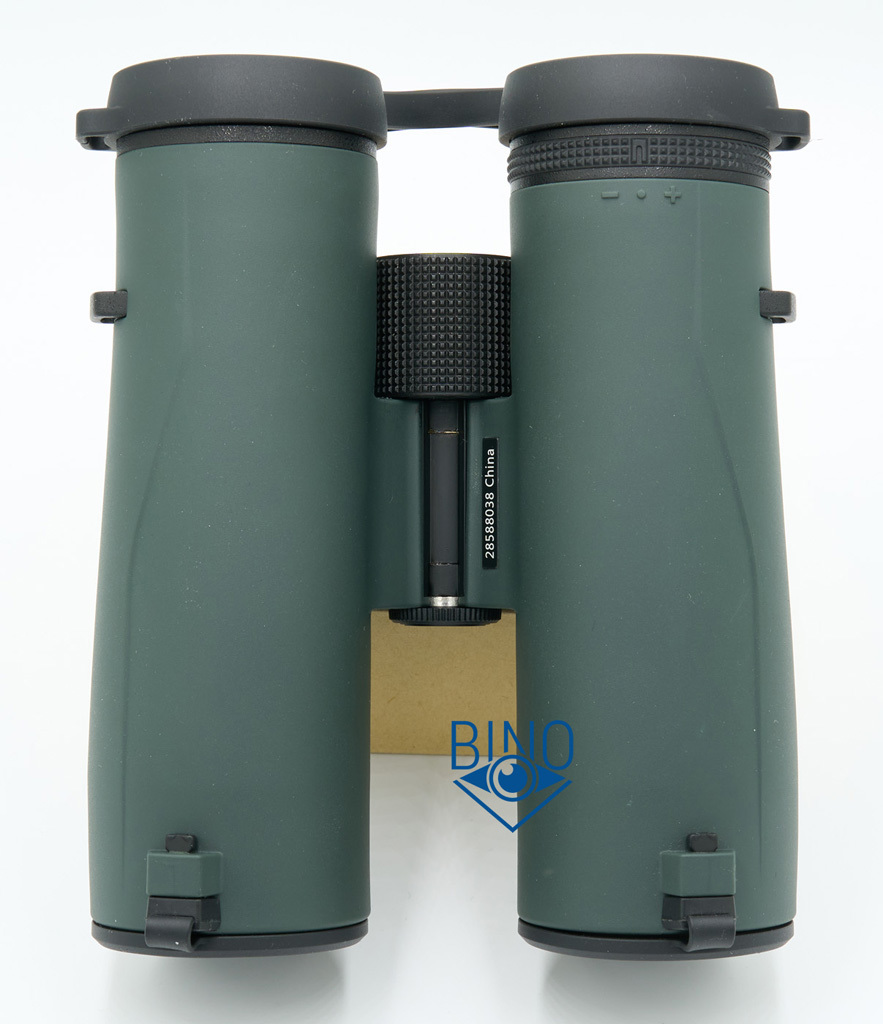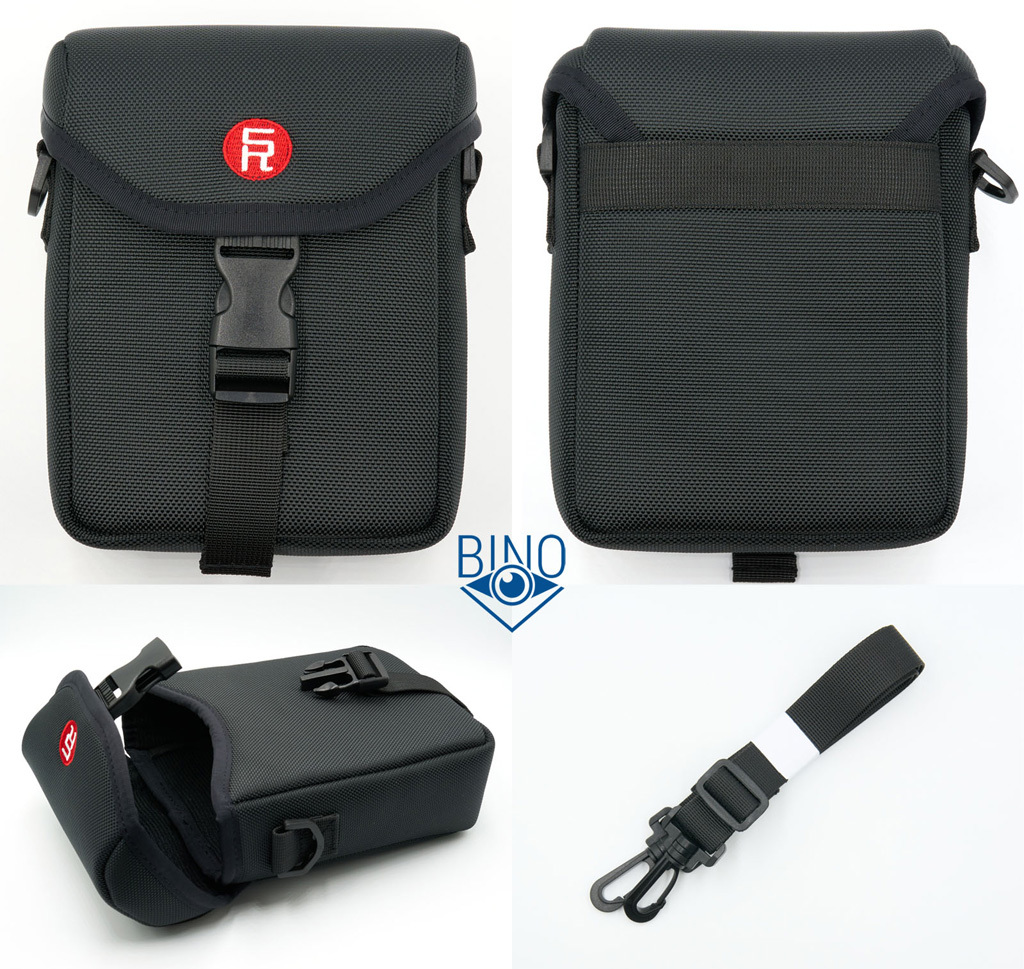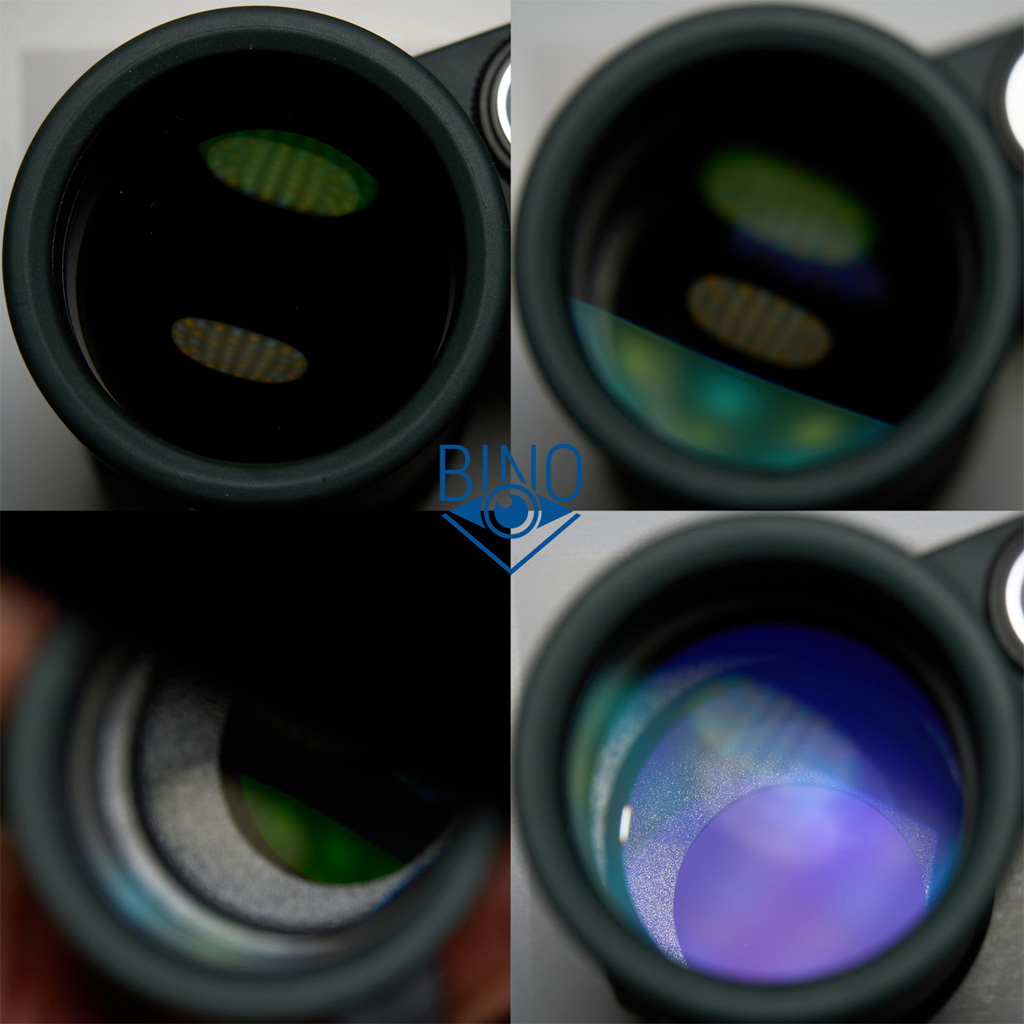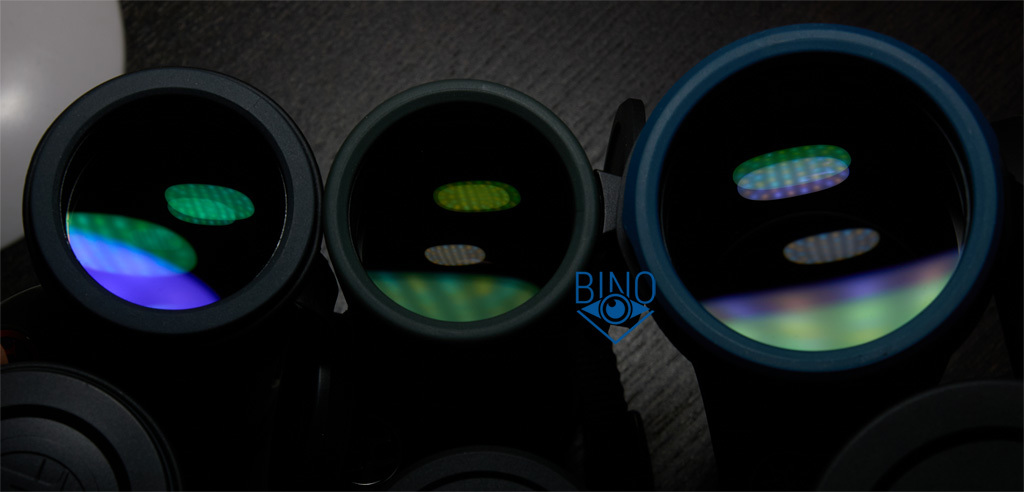I made
a review of Athlon Cronus 8.5x42 some time ago and finished it with a short wish-list for future Cronus models. Some aspects from the list were improved in Meade MasterClass series, and all were noticeably improved in a new Sky Rover Banner Cloud APO.
Yes, the new 8x42 APO looks to me as the same design and a good improvement to Athlon Cronus\Meade MC design.
Let me share the list one more time with some comments, since it has not been clear enough:
-The weight of a pair of binoculars was decreased to 890 grams, compared to Cronus - 945gr, MMC - 905gr.
-The thread cap is totally flat now.
-The eye cups have 6 positions (5 steps out).
-The Image is bright, the view is brighter than in Meade MC 10x56, which is a little brighter than Athlon Cronus 8.5x42.
-The color reproduction is very good, almost neutral, and has a slight yellow hint. The view is less warm than in Meade MC 10x56.
The Banner Cloud is medium sized binoculars with dimensions 156х125х66мм at IPD=65mm and they weigh 890gr (31,34oz), and 1120gr (39,5oz) total (binoculars + caps + neck strap + case).
As you can see, the objectives are asymmetric to the eyepieces: there are 72mm between the centers of the binoculars barrels at IPD=65mm. Though the binoculars utilize Schmidt-Pechan prisms. This provides a slight 3D (three-dimensionality) effect to the view, better than, for example, Nikon M7 8x42 has.
The binoculars chill hands in cold weather because of the thin armor. The overall build quality and materials are comparable to Meade MasterClass, and simpler than Nikon M7 has. The inner side of the binoculars has a label with a serial number and production place - China.
The neck strap is a neoprene one, 52mm of width and 5mm of thickness. It is elastic enough for the binoculars' weight.
The supplied case is of normal quality, padded enough on the inside to protect the binoculars. The inner space fits just the binoculars size, there is almost no free space for the neck strap. The case dimensions are 195x160x85mm.
The focuser knob seems to be made of aluminium, 33mm in diameter and 28mm in height, could be rotated by two fingers. The upper part of the focuser knob with the binoculars name stands still, while the focuser travels, but can be turned round with a finger. The focuser action varies in different directions: it is light in CW direction, and has average stiffness in the CCW direction. There is no free play. The focuser becomes a little stiffer at +1° Celsius outside, but continues to operate well.
It CCW to infinity, the full focus travel is around 560 degrees. The close focus is 2,1m (6,9 ft), from it to 15m (16,5yd) distance is 370 degrees of focus travel, then 50 degrees towards 300m (328yd) and infinity. And 140 degrees of focus travel left. When focused on infinity I can observe up to 40 meters ahead.
The IPD is 56-74,5mm. The barrel's movement inward and onward is not very stiff.
The eye cups are made of plastic and can be screwed off from eyepieces. They have the outer diameter (which touches the nose) of 48mm, middle diameter (which touches eyebrows) of 45,5mm and inner diameter of 35,5mm. The top surface is flat and made of rubber covering.
The eye cups have 5 steps out and can be left in intermediate positions. The out\in movement is stiff, may be too stiff for quick usage. When the eye cups are collapsed I can see the whole field of view with my thin rim glasses and almost full field (~90%) with sunglasses on. Only with unscrewed eye cups i can see the whole field with sunglasses on.
The photo below is for demonstration purposes only, the measurement was more precise.
I measured the eye relief (for off-axis beams) from the eye lens at 15,5mm. Very impressive for that AFOV, but the eye lens is recessed for 4mm inside the eye cup. So the available eye relief from the rim of the eye cup can be: 11,5 - 9 - 6 - 4 - 2 - 0mm depending on the eye cup position.
The exit pupil is almost round, and has 5,3mm of diameter. First row: in the left photo there is the left barrel exit pupil, in the right photo there is the right barrel exit pupil; second row: in the left photo there is a straight light test by phone’s flashlight, the right photo shows edge vignetting.
The inner side of the barrels are blackened properly, there is no noticeable light haze around the exit pupils. The binoculars work pretty well towards the Sun direction, with just a little glare in the lower part of the field. This is also achieved because of the knife-edge baffle, used in the binoculars behind the objective.
I checked other binoculars and found out that Meade MC 10x56 has the same knife-edge baffle, while Athlon Cronus 8.5x42 does not. In the photo below Cronus is on the left, Banner Cloud is in the center, Meade MC is on the right.
The inner diameter of the Banner Cloud objective rings looks like 41,8mm, and I measured the effective aperture at 41,5mm. So the magnification could be 41,5/5,3=7,83x.
The first lens of the objective is recessed for 9,5mm inside the barrel. There are some baffle threads on the lens rings before the objective and behind it.
The objective design is a triplet (3 lenses in 2 groups): a cemented doublet + a single lens. The coatings are with reflections of green, yellow and violet colors and low intensity. All the reflections of light inside are colored, which confirms the good FMC is used. The light transmission could be around 90-91%, the view is very bright.
Here is a comparison of objective coatings of Athlon Cronus 8.5x42 (left, most bright reflections), Banner Cloud 8x42 APO (center, reflections are lowest in intensity) and Meade MC 10x56 (right, average reflections intensity).
As I wrote at the beginning of the review, the color reproduction of the Banner Cloud is very good, almost neutral, and has just a slight yellow hint. Similar color reproduction can be seen in the modern (one year old) Nikon M7 8x42.
The apparent brightness of the image in the Banner Cloud is very good as well, comparable to Nikon M7 8x42, and slightly brighter than in Zeiss Conquest HD 10x32 from old production (during daytime usage). As I can see, the prisms used are of a normal size, not small ones, and the vignetting of the edges is not high.
The flare suppression is quite good, better in the Banner Cloud than in Athlon Cronus 8.5x42 or Nikon M7 8x42: there is just small veiling glare when observing towards the Sun direction. But the other part of the view stays with good contrast and colors saturation.
There are some small spikes of low intensity on bright street lights during night city observations, but no ghosting on the optics.
The colors are vivid enough, a little more saturated in the Banner Cloud than in Nikon M7 8x42, but a little less saturated than in Vixen SG 6.5x32. The contrast is good. The overall image quality (contrast and transparency) is slightly better in the Banner Cloud than in Nikon M7 8x42, while Vixen SG 6.5x32 has a little better view to my eyes.
The sharpness on axis is good in the Banner Cloud, comparable to Nikon E 8x30 (multi). Nikon EII 8x30 or Zeiss Conquest HD 10x32 are a little sharper, this can be noticed in handheld use.
Assuming all above Sky Rover Banner Cloud 8x42 APO could be just a good pair of binoculars of the middle $400-500 price tag. But there are three features which make them stand out.
First of all it is an ultra wide field indeed.
The TVOF of the Banner Cloud is wider than 9°, and is slightly wider than in Vixen SG 6.5x32. I measured TVOF indoors at 9.3° or 162/1000m, but need more time to confirm it under clear skies by stars angle.
The AFOV is measured at 68,6°.
The second feature is the Chromatic Aberration (CA) correction, which is very good on the axis. Better corrected in the Banner Cloud, than in Athlon Cronus 8.5x42 or Nikon M7 8x42. You will hardly see CA on the axis over a bird’s silhouette in the bright sky at any distance, or against tree branches towards the Sun direction.
The center one fourth or even maybe one third of the field of view are almost CA free. More out CA becomes visible, it increases towards the edges, where it has less than a medium level. The colors of CA are classic ones: yellow and blue.
The third feature is a field flattener, which is used in the ocular construction. This is something unusual for middle price binoculars. Athlon, Meade, Oberwerk are the only ones that come to my mind, whose binoculars utilize field flatteners in that price tag.
The field of view of the Banner Cloud is corrected in a very good way (similar to Cronus\MMC and a little better in the Banner Cloud): the edges correction is better than in Zeiss Conquest HD 10x32 and noticeably better in the Banner Cloud than in Nikon M7 8x42. During day or night terrestrial observations you won’t notice any softness outward. Actually, the field is so wide that it could be corrected worse, but I won't notice any softness outward anyway. On a dull day Nikon M7 8x42 has got only around 6,3° of good field, while the Banner Cloud has 9,3°!
On precise testing with a 4x booster (or by stars) I can see that the image degradation starts from the center and grows slowly towards the edges. The worst picture is at 70% of radius, then becomes better towards edges, where it is almost as good as on the axis. It is needed just 5-10 degrees of the focuser travel to focus away the field curvature at the edge, where there is also a small trace of astigmatism.
Here is the photo of an artificial star at the edge of a field of view of Sky Rover Banner Cloud 8x42 APO (left) and Athlon Cronus 8.5x42 (right) for comparison.
During stargazing the field of the view is full of almost pin-point stars from edge to edge! It is a really beautiful and wide view. Stars only dim at the very edge.
The Banner Cloud has a flat field design (same as in Cronus\MMC), but with a slight 3D effect, as I mentioned earlier. So let’s proceed to the distortion.
The tangent distortion is a pincushion (positive), of a very low level: straight lines stay straight over the field of view.
The angular distortion is a barrel (negative) from the first look, of a low level. But it has a more complex form, a mustache. Since the angular distortion is higher than the tangent, there is some field curvature during panning and a small Rolling Balls effect. I feel it in the Banner Cloud less than in Athlon Cronus 8.5x42 and much less than in Meade MC 10x56.
To summarize, the view through Sky Rover Banner Cloud 8x42 APO is really a joy, because:
-the view is bright, there is no noticeable darkening of the image;
-the view is almost neutral in color reproduction, with no noticeable warm\cold hint;
-there is no noticeable field curvature while panning;
-there is no noticeable color fringing, except the very edges;
-there is almost no edge softness.
Downsides of the Banner Cloud: it’s a heavy pair of binoculars; the fit and finish look more like of binoculars of the $300 price tag; it has a slight Rolling Balls effect; as was discussed on CN it could have some warranty issues
I’m personally not a big fan of a flat field design for daytime observations, though it is very good for stargazing, but like these binoculars. However, new Porro binoculars Moon-Star APO 8x32 or Zeiss SFL 8x40 seem better to me in that aspect, while they have poorer edge correction. But for the price the Banner Cloud is good.





























